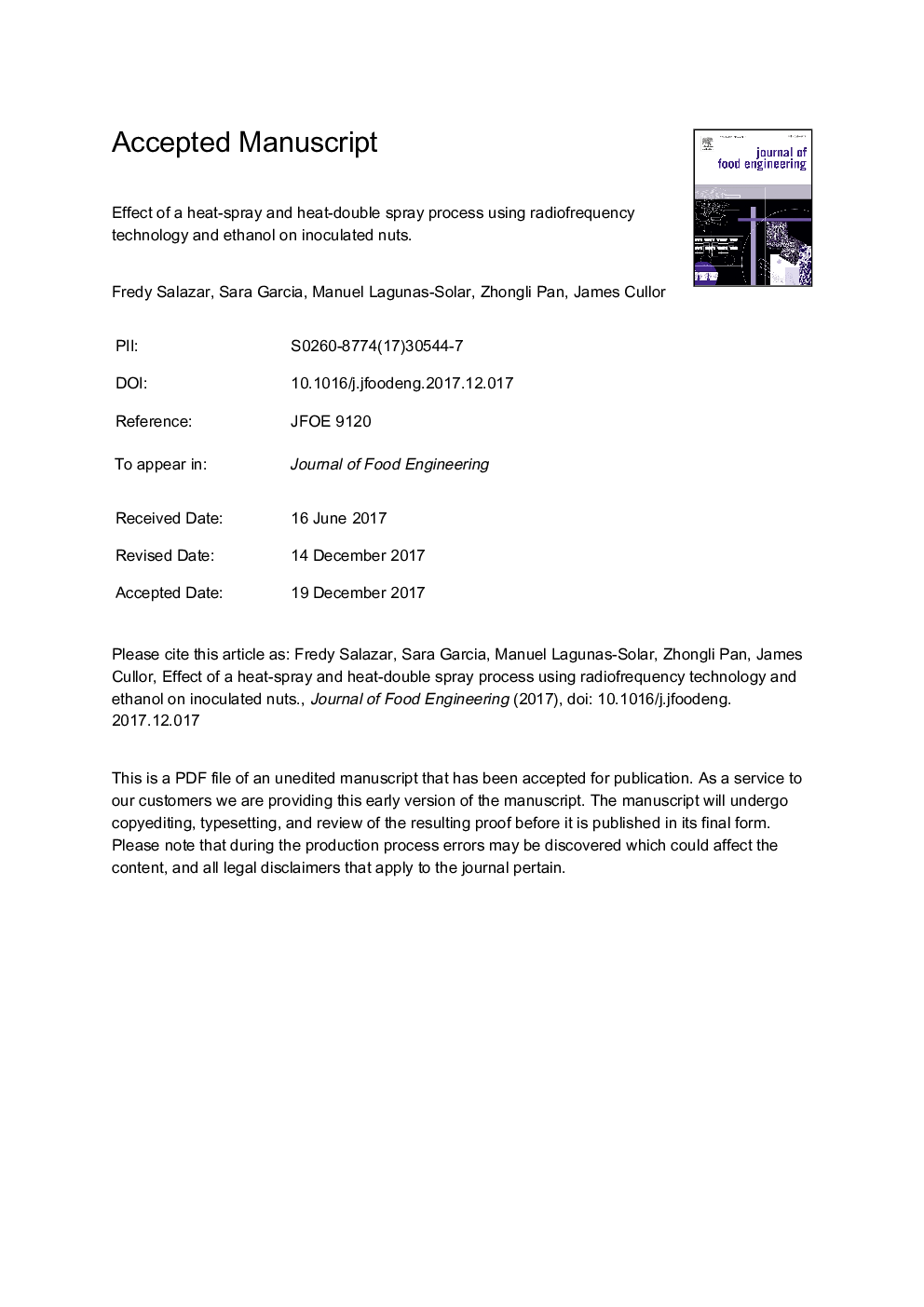| Article ID | Journal | Published Year | Pages | File Type |
|---|---|---|---|---|
| 6664626 | Journal of Food Engineering | 2018 | 28 Pages |
Abstract
Almonds provide a nutritious source of energy and are known to have led to positive health benefits when consumed. However, outbreaks of Salmonella spp. in raw almonds have led to reduced consumer confidence in the nut industry. Regulatory standards established by the FDA require almonds destined for consumption in the US to undergo a process treatment that reduces Salmonella spp., by 4.0 log10â¯CFU/g. Four Generally Recognized as Safe (GRAS) surface disinfectants suchs as ethanol, hydrogen peroxide, acetic acid, and peracetic acid were tested on almonds inoculated with Enterococcus faecium NRRL B-2354. It was found that 70% ethanol has the most potential to achieve a high log10â¯CFU/g reduction, while holding quality. The optimal spray process had the following parameters: (1) a spray quantity of 4.5% w/w (pâ¯<â¯.05), (2) contact time of 1-30â¯min (3) use of 2 spray phases (pâ¯<â¯.05). The use of radiofrequency (RF) heating and 70% ethanol in the heat-spray process achieved 5.8 log10â¯CFU/g reductions. In this experimental mode, independent heat and spraying achieved 2.9 and 3.0 log10â¯CFU/g reduction, which corresponds to a contribution of 50% each to the combined heat-spray process using RF heating. The RF experiments in the heat-double spray process achieved log10 reductions of 6.7, 4.7, 3.8, and 3.5 log10â¯CFU/g for almonds, pecans, pistachios, and walnuts, respectively. The implications of these findings are that both the heat-spray and heat-double spray process may become alternatives to current nut disinfection process to achieve high log10 reduction.
Related Topics
Physical Sciences and Engineering
Chemical Engineering
Chemical Engineering (General)
Authors
Fredy Salazar, Sara Garcia, Manuel Lagunas-Solar, Zhongli Pan, James Cullor,
